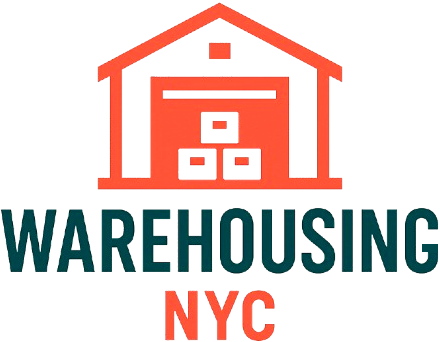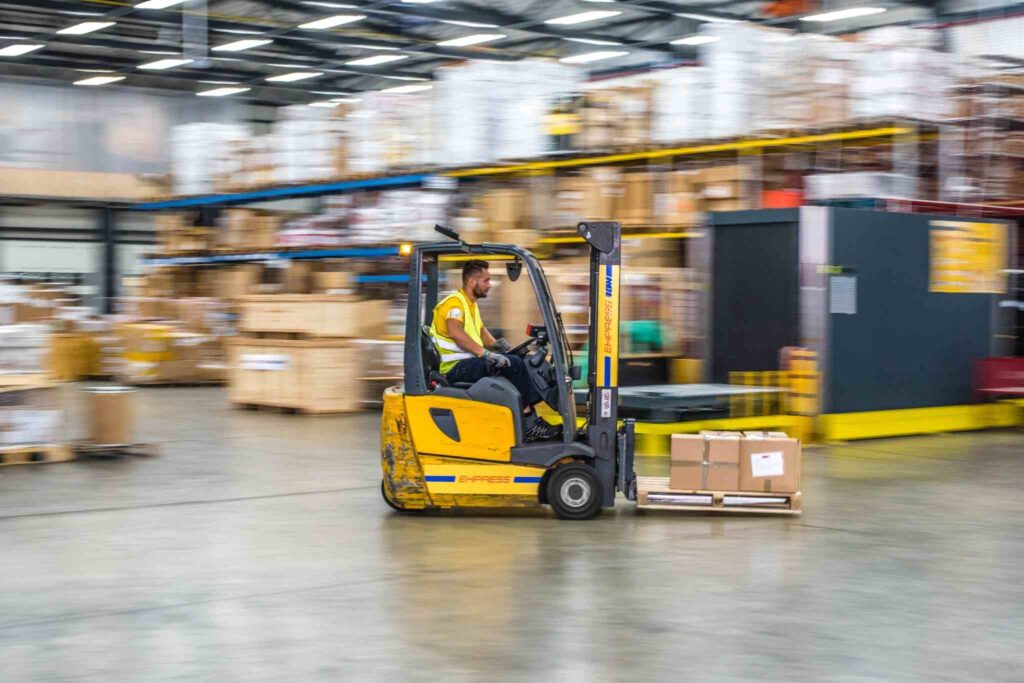Need to move fast without being weighed down by permanent equipment costs? In New York, NY, where warehouse space is limited and deadlines are tight, agility is everything. That’s why material handling equipment rental has become a go-to solution for smart, fast-moving logistics teams. Instead of investing in expensive machines that might sit idle half the year, businesses can rent exactly what they need—when they need it.
From forklifts that boost throughput to conveyor systems that streamline packing and sorting, rentals offer a cost-effective, scalable way to stay productive during peak seasons or unexpected demand surges.
Here are six reasons NYC warehouses rely on this strategy to optimize warehouse logistics.
Key Takeaways
✔ Renting material handling equipment offers flexibility without the high upfront investment.
✔ NYC warehouses benefit from rentals during seasonal demand and space constraints.
✔ Professional rental partners help maintain warehouse logistics and material flow.
✔ Access to specialized equipment supports complex or industry-specific tasks.
✔ Rentals eliminate maintenance burdens and reduce downtime risks.
✔ Planning ahead ensures equipment availability during peak seasons.
✔ Renting enables trial use of new types of material handling systems.
✔ Clear rental terms and compliance support are essential for safe, smooth operations.
Table of Contents
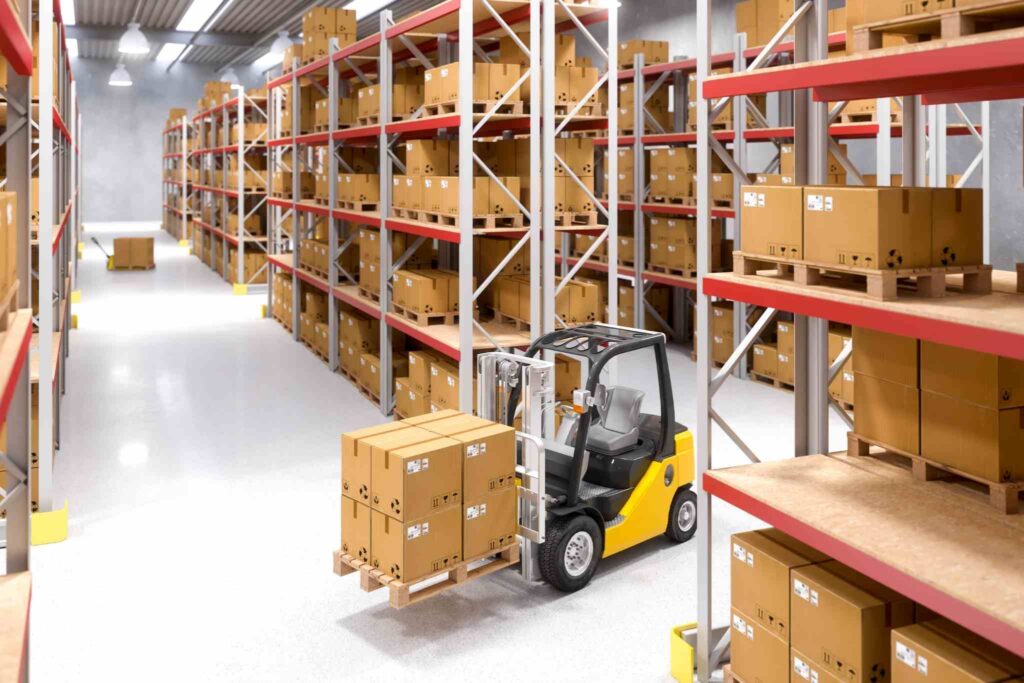
6 Reasons NYC Warehouses Depend on Material Handling Equipment Rentals
1. Cost-Efficiency Without Long-Term Commitment
Renting material handling equipment helps businesses control overhead while staying flexible in a fast-paced warehouse environment. Instead of investing thousands into equipment that may sit idle during slower periods, rental options provide financial breathing room. This approach supports smarter budgeting without sacrificing productivity.
How Renting Saves Warehouses Money and Reduces Risk
- Lowers Upfront Investment: Buying new equipment—especially forklifts, pallet jacks, or automated systems—can strain capital budgets. Rentals allow warehouses to access what they need for specific timeframes without tying up funds in long-term assets.
- Avoids Maintenance and Repair Costs: Rental agreements often include routine maintenance, emergency repairs, and equipment swaps. This reduces downtime and eliminates unexpected costs that would otherwise disrupt warehouse logistics and material flow.
- Scales Up Without Overspending: During seasonal demand surges or large fulfillment contracts, warehouses can increase capacity quickly by renting additional units. This flexibility ensures that material handling in warehouse operations keeps pace with volume, without committing to equipment that may not be needed year-round.
2. Access to Specialized Equipment for Unique Jobs
Not every warehouse project needs the same tools. Some tasks call for highly specific material handling equipment that most facilities don’t own—or need—daily. In cases like heavy equipment hauling, renting makes it easy to bring in specialty tools without the burden of long-term ownership.
How Specialized Rentals Keep Warehouses Agile and Productive
- Handles Irregular or Oversized Inventory: Some NYC warehouses deal with bulky, high-value items like commercial HVAC units or large pallets of construction materials. Renting custom forklifts or telescopic handlers for a short-term job supports material handling in warehouse operations without disrupting daily workflows.
- Supports Specialized Storage Needs: For warehouses managing pharmaceuticals or food products, material handling systems often require climate-safe capabilities. Renting insulated pallet movers or climate-controlled carts allows teams to stay compliant without buying niche tools used only occasionally.
- Meets Industry-Specific Demands: Warehouses serving e-commerce, retail, or manufacturing often need equipment designed for narrow aisles or mezzanine-level access. Rental providers offer models that align with different types of material handling systems, so teams can operate efficiently within the limitations of their layout.
3. Flexibility for Seasonal or Sudden Demand
Warehouse activity isn’t always predictable—especially in New York. Seasonal rushes, last-minute orders, or temporary contracts can quickly overwhelm available resources. Renting gives warehouses the ability to adapt fast and keep material handling in warehouse operations flowing.
How Rentals Help Warehouses Stay Nimble During Busy Periods
- Adjusts to Seasonal Peaks: During holidays, back-to-school season, or product launches, demand spikes dramatically. Renting additional forklifts, conveyor belts, or sortation tools keeps warehouse logistics and material flow smooth without overloading owned inventory.
- Bridges Equipment Gaps Quickly: If a primary machine breaks down or a new contract starts suddenly, there’s no time to wait for a capital purchase. Rentals help fill the gap with minimal disruption to ongoing fulfillment.
- Supports Temporary Staff Increases: A growing crew often requires more carts, lifts, and handling systems to stay productive. With short-term rentals, businesses can equip teams fast, even if they only need the extra capacity for a few weeks.
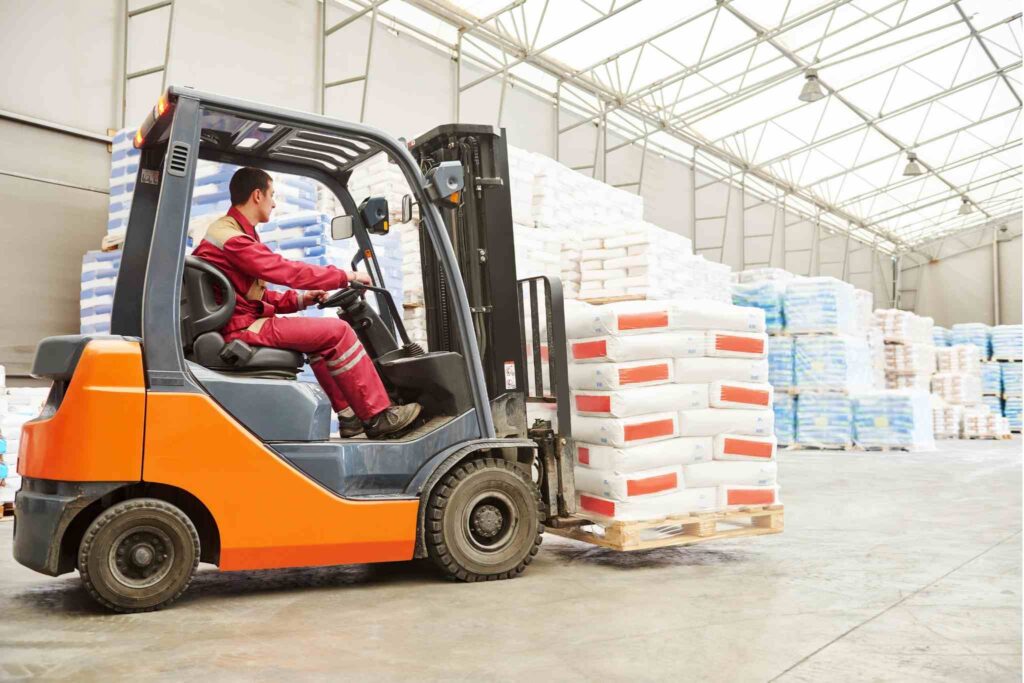
4. Space Optimization in Urban Warehouses
Space is at a premium in NYC, and warehouse floors must be used wisely. Permanent equipment takes up valuable square footage, whether it’s in use or not. Renting offers a solution that aligns with limited space and evolving needs.
How Temporary Equipment Supports Better Layout and Flow
- Eliminates Idle Storage: Once a project ends, rented equipment goes back to the supplier—freeing up space instantly. That’s especially important when managing material handling in warehouse buildings where floor space is more valuable than storage space.
- Enables Rotating Workstations: Warehouses with flexible layouts often reconfigure sections based on workload or inventory types. Renting different types of material handling systems, like portable conveyors or mobile racks, allows those setups to shift without permanent installation.
- Prioritizes High-Turn Inventory Zones: Renting smaller or more agile material handling equipment—like electric pallet jacks or compact lifts—supports fast-moving product zones without clogging up aisles. This helps maintain seamless warehouse logistics and material flow in tight quarters.
5. Reduced Maintenance and Compliance Burden
Maintaining a fleet of machines comes with a lot of responsibility—from inspections and repairs to certifications and safety checks. Renting shifts that burden to the provider, allowing businesses to stay focused on operations.
How Rentals Simplify Equipment Management
- Avoids Costly Downtime: Rental companies handle all routine maintenance and provide replacements if something breaks. That’s a major plus for warehouses relying on consistent material handling in warehouse systems to meet shipping deadlines.
- Ensures Regulatory Compliance: NYC warehouses often operate under strict safety codes and labor regulations. Rental fleets are typically up-to-date with OSHA standards, giving businesses peace of mind when using equipment in high-risk environments.
- Limits Internal Resource Strain: Without a large maintenance staff or dedicated compliance officer, smaller warehouses may struggle to maintain owned equipment. Rentals eliminate the need to manage service schedules, freeing up teams to focus on warehouse logistics and material flow.
6. Easy Access to Technology and Innovation
New technologies in warehouse operations are evolving fast, from automated guided vehicles to IoT-connected forklifts. Buying advanced tools can be risky if the tech becomes outdated. Renting makes innovation more accessible and practical.
How to Keep Up with Technology and Innovation
- Try Before Investing: Rental options let businesses test new types of material handling systems—such as robotic palletizers or smart racking systems—before making a full commitment. This trial period ensures the tools actually support the team’s workflows.
- Stay Competitive with New Features: Modern material handling equipment includes real-time tracking, energy efficiency, and enhanced safety. Rentals allow warehouses to adopt these upgrades without the capital expense of full ownership.
- Adapt to Industry Trends: As e-commerce and last-mile logistics evolve, so do equipment needs. Renting lets NYC warehouses respond to changing industry standards by bringing in newer, more advanced tools that align with their current operations and layout.
How to Evaluate a Rental Partner for Warehouse Equipment
Choosing the right rental partner can make or break warehouse efficiency. In New York, NY, logistics is fast-paced; it’s essential to work with professionals who do more than drop off equipment but support the entire flow of warehouse operations. This level of service is especially vital in today’s environment, with the global logistics industry now valued at over eleven trillion U.S. dollars.
Here are factors to consider when evaluating a rental partner:
1. Industry Experience and Specialization
A good rental partner should have a track record in warehouse environments, not just general equipment rental. Providers with industry-specific experience understand the types of material handling systems used in busy warehouses and can recommend tools that fit the job. Whether it’s managing tight aisle space or supporting climate-sensitive goods, seasoned pros know what works.
2. Range of Material Handling Equipment Available
A professional rental partner offers more than just forklifts—they stock everything from pallet jacks to conveyors and mobile racking systems. Having access to a wide selection of material handling equipment allows warehouses to tailor rentals to their exact needs. This flexibility is especially valuable when dealing with unpredictable shifts in inventory or workload.
3. Speed of Delivery and Pickup
Time matters in NYC warehousing, and delays can lead to costly slowdowns in material flow. Reliable partners offer same-day or next-day delivery and quick equipment retrieval once the job is done. Fast turnaround ensures that warehouses can stay focused on productivity instead of waiting on logistics. The ability to scale operations quickly—even on short notice—can make or break a tight fulfillment window.
4. Maintenance Support and Equipment Condition
Rented machines should arrive clean, functional, and safety-checked. A reputable partner performs regular maintenance and provides on-call support in case of breakdowns—keeping warehouse logistics and material flow uninterrupted. Avoiding downtime from faulty equipment is one of the clearest advantages of working with professionals. This level of reliability gives teams confidence to maintain output even during peak pressure.
5. Clear Rental Terms and Transparent Pricing
Hidden fees or vague contracts create headaches. Trusted providers are upfront about costs, billing schedules, and what’s included in the rental—such as maintenance or damage coverage. This clarity makes it easier for warehouses to budget and manage material handling in warehouse operations responsibly. Clear expectations also reduce disputes and help build long-term relationships with rental partners.
6. Knowledge of Local Compliance and Safety Standards
NYC warehouses must follow strict regulations, and rental partners should be well-versed in local compliance rules. From OSHA guidelines to fire lane clearances, experienced providers help ensure that rented equipment won’t create code violations. This kind of support is essential when safety and accountability are part of daily operations.
How to Plan for Seasonal Material Handling Equipment Needs
Seasonal peaks—whether during holidays, the back-to-school rush, or major product launches—can overwhelm even the most organized warehouse teams. For NYC warehouses that depend on precise timing and space efficiency, preparing in advance is essential.
As the global warehousing market is projected to grow at an annual rate of 8.1% from 2024 to 2030, it’s more critical than ever to partner with professionals who understand warehouse logistics and material flow.
For businesses, here are tips to keep seasonal material handling in check:
1. Review Historical Warehouse Activity
Looking back at previous years offers valuable insights into order volume, staffing, and equipment use. Analyzing past trends helps identify which types of material handling systems were most strained or underutilized. This data becomes the foundation for smarter planning and prevents last-minute scrambling. It also reveals patterns in seasonal demand that can guide when and where to scale resources.
2. Identify Equipment Gaps Early
Before the peak hits, assess current inventory to see what’s missing—are there enough pallet jacks, forklifts, or portable racks? Make a list of critical tools that support core material handling in warehouse operations. Flag anything outdated or underperforming to replace or supplement through rentals. Early identification also gives more flexibility in securing the right equipment before supplies run low.
3. Coordinate with a Rental Provider in Advance
Professional rental partners appreciate early notice—especially during high-demand seasons. Reach out at least 4–6 weeks ahead to reserve equipment and confirm delivery schedules. A good provider will also help recommend material handling equipment tailored to the specific workload and warehouse layout. Establishing this relationship early can also give teams priority access to in-demand items.
4. Build in Extra Capacity for Last-Minute Surges
Even with careful planning, surprise orders and staffing changes can throw things off. Including a buffer—such as a few extra pallet movers or mobile conveyors—helps maintain warehouse logistics and material flow when things get hectic. It’s better to have a little more than risk falling behind. Extra capacity also gives businesses peace of mind when handling urgent, high-value shipments.
5. Align Equipment With Staffing Levels
Seasonal teams often include temporary workers who may be unfamiliar with advanced tools. Choosing user-friendly or low-training-required material handling systems ensures smooth onboarding. Rental partners can often recommend models that are safe and intuitive for seasonal crews. This reduces training time and helps maintain productivity during high-volume periods.
6. Plan Pickup and Transition After the Season Ends
Once the peak period wraps up, it’s important to have a clear exit strategy. Arrange equipment returns with the rental company and reset internal processes to pre-peak operations. Professional partners will assist with seamless pickup and offer insights on what worked well for future planning. Debriefing with the team and the rental provider can uncover ways to optimize the next busy season.
Frequently Asked Questions
What is the handling process in a warehouse?
The handling process in a warehouse involves the movement, protection, storage, and control of materials throughout the facility. This includes unloading goods, transporting them within the warehouse, storing them properly, and preparing them for outbound shipping. Efficient material handling in warehouse operations supports smooth inventory flow and minimizes product damage or delays.
What are the three types of material handling?
The three main types of material handling are manual, semi-automated, and automated. Manual handling involves physical labor—like lifting or moving items by hand—while semi-automated handling includes tools like pallet jacks or forklifts. Automated systems use robotics, conveyors, or automated guided vehicles (AGVs) to streamline warehouse logistics and material flow.
What are the 10 principles of material handling?
The 10 principles of material handling are: planning, standardization, work, ergonomics, unit load, space utilization, system, automation, environment, and life cycle cost. These principles guide the design and operation of safe, efficient material handling systems in warehouse environments. Following them helps reduce labor, increase safety, and improve workflow efficiency.
What does OSHA consider material handling?
OSHA defines material handling as the movement, storage, control, and protection of materials throughout manufacturing, warehousing, distribution, consumption, and disposal. It includes manual lifting, the use of forklifts, hoists, conveyors, and other equipment. OSHA regulations aim to minimize injuries associated with lifting, repetitive motion, and improper equipment use in warehouses.
What is the material flow in a warehouse?
Material flow in a warehouse refers to the path goods take from receiving to storage, then to picking, packing, and shipping. A smooth flow ensures that inventory moves efficiently without bottlenecks or misplacement. Effective warehouse logistics and material flow are essential for meeting order deadlines and reducing operational costs.
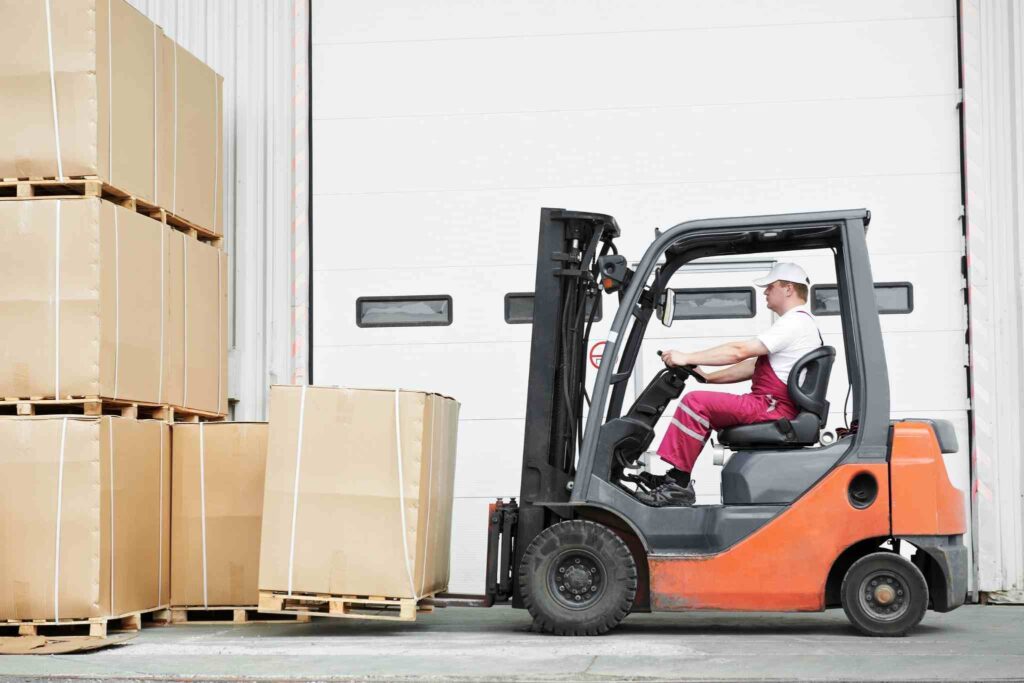
Get Scalable, Stress-Free Storage with Warehousing NYC By Best
At Warehousing NYC By Best, we make it easy for businesses in New York, NY, to stay organized, agile, and ready for anything. Whether it’s seasonal inventory, last-minute fulfillment, or ongoing product storage, our flexible warehousing solutions are designed to move with your needs—not against them. Located in the heart of NYC, our secure, climate-controlled facilities and experienced logistics team ensure your goods are handled with care and precision.
Let’s simplify storage, streamline your operations, and take the pressure off your space.
